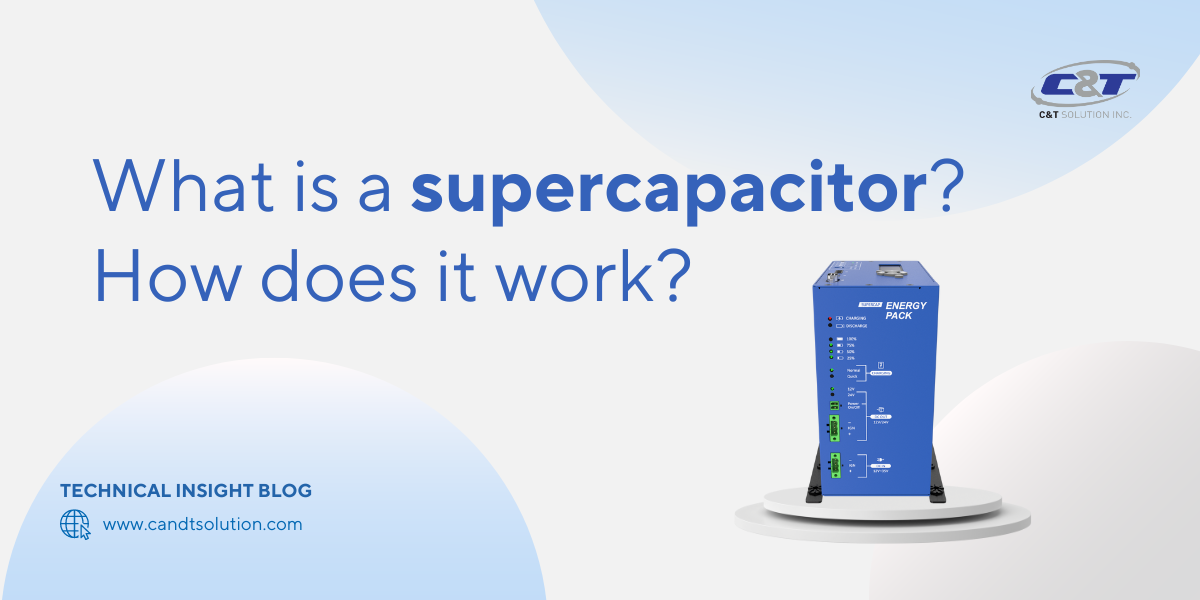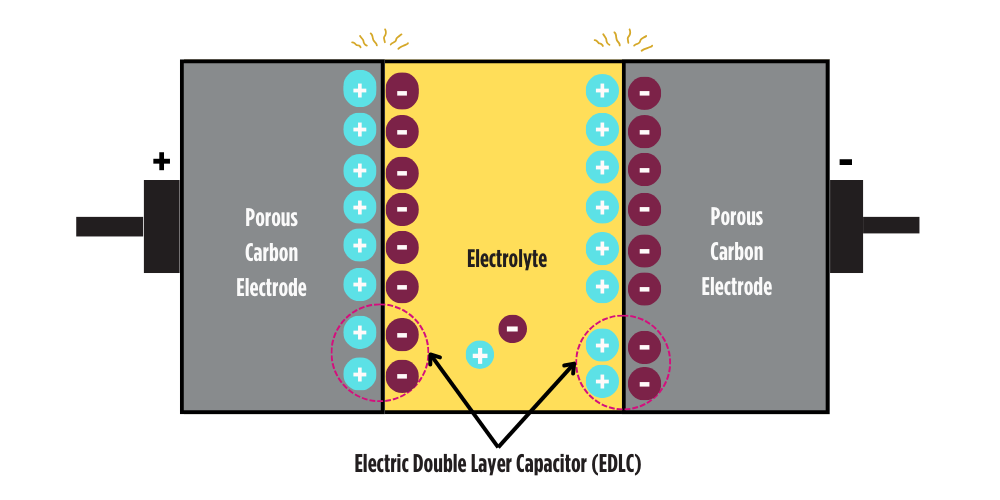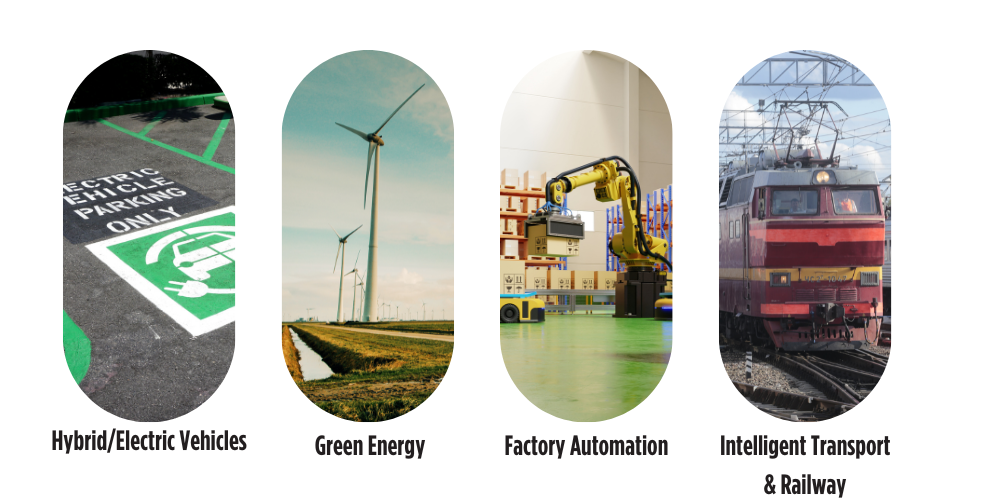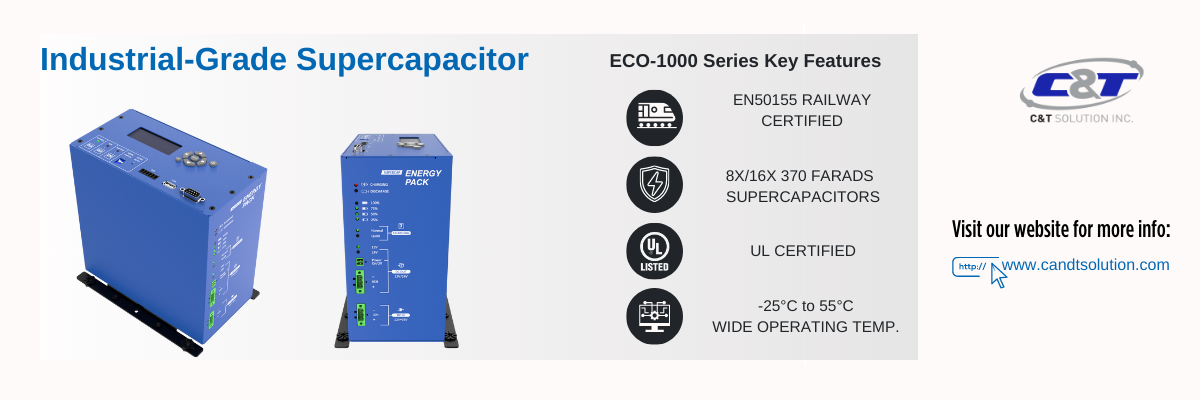What is a Supercapacitor? How does it work?

Although batteries are popular in the uninterruptable power supply (UPS) market, they present drawbacks such as having a short lifecycle, a heavy and space-consuming build, being prone to breakdowns, and harmfulness to the environment when being disposed of due to their toxic materials. Supercapacitors, on the other hand, are a strong contender due to qualities ranging from low-level maintenance, longer lifecycle to its compact size and lightweight.
Keep reading to understand:
- What’s inside a supercapacitor
- How it works
- Various applications of this revolutionary technology
- Differences between supercapacitors and batteries
- How they are worthwhile to consider as a component to include in robust UPS systems
What is a supercapacitor?
A supercapacitor is a high-power density energy storage system and plays a critical role in various industries as an emergency power back-up source. They act as a short-term power supply, from 30 seconds up to a few minutes, instead of a long-term energy source. They are used before shifting to longer-term backup-power sources.How does a supercapacitor work?
At first glance, supercapacitors resemble a battery, but the difference lies within the ways it stores and releases its energy. To understand how a supercapacitor works, there are three key components to consider. Let’s take a look on the inside of a supercapacitor.
Within a supercapacitor, three essential components are:
- Electrodes: These can be visualized as sheets facing each other. Each electrode has a special surface that bears a unique ability to hold onto electric charges. These surfaces are like magnets for electrical energy – they create a pull for specific electric charges, one sheet would attract positive charges, and the other sheet would attract negative charges. The amount of electric charge generated by a supercapacitor, also known as capacitance, is directly proportional to the size of the plates and inversely proportional to the distance between the plates.
- Electrolyte: Imagine this as a liquid that the plates are submerged in, kind of like plates in a sink full of water. This liquid acts as a medium to help the electric charges move around in the supercapacitor. Specifically, the electrolyte provides conductivity and facilitates the transfer and balance of charges between the two electrodes, in addition to providing insulation and protection to the supercapacitor against leaking of charges and short circuits. The performance of the supercapacitor is greatly influenced by the kind of electrolyte used.
- Insulator: In a supercapacitor, the two electrodes are physically separated by a layer called an insulator, much like a sheet of filter paper. This layer prevents the two special surfaces from coming into contact, thus separating the charges to prevent them from mixing prematurely. This separation creates an electric field and facilitates large amounts of energy stored. This energy is generated electrostatically, like when you rub a balloon against your shirt and the friction generated causes the hair to stand up when you place the balloon near your skin. In other words, there are no chemical reactions involved to generate this energy. The amount of energy stored in a supercapacitor is also influenced by the thinness of the insulator.

Much like filling up a dam with water, by passing electricity through the supercapacitor, the positive and negatively charged ions are amassed on each side on the electrodes, creating an electric double-layer and thus storing large amounts of energy. When the time arrives for a supercapacitor to work, such as during an emergency that causes a power outage or another instance where a sudden, rapid surge of energy is created, the charges move through the capacitor and powers the device it is connected to with a rapid surge of energy release. Supercapacitors can charge and discharge rapidly, ranging from 1-10 seconds making it a desirable technology in emergency power outages.
What’s the difference between a supercapacitor and a capacitor?
A supercapacitor can store up to 10 to 100 times more than conventional capacitors. What makes a supercapacitor different from a conventional capacitor is in its design. There are two fundamental ways in which they differ:- Electrode Material. The first is the material that is used for the electrodes in a supercapacitor. Activated carbon, a porous material which covers a much larger surface area, allows for higher energy storage in supercapacitors.
- Distance Between Electrodes. Second, the distance between the two electrodes is much smaller in supercapacitors compared to conventional capacitors. In a conventional capacitor, this distance lies within 10-100 microns, whereas in a supercapacitor this distance dramatically decreases to one-thousandth of a micron (for context, a human hair is approximately 70 microns). The smaller distance creates a larger electric field, leading to higher levels of energy storage.
Overall, supercapacitors have a much higher energy density, or capacitance, as compared to normal capacitors.
Fun fact: The level of energy stored is measured in farads, named after the English physicist Michael Faraday (1791-1867).
Supercapacitors vs Batteries in UPS systems – are they better than batteries?
Opting for a supercapacitor provides significant advantages over using a battery in UPS systems, these include:- High-powered rapid charge and discharge
- Longer lifecycle
- Durability
- Wider operating temperature
- Reduced waste and environmental harm
What are some disadvantages of using a supercapacitor in UPS systems?
Although supercapacitors present many advantages over batteries, batteries have one significant advantage where they possess a specific energy density that allows them to store energy long-term and to release this energy over longer periods of time, making batteries a more reliable and stable power source. Another disadvantage of using a supercapacitor is their higher initial cost, they are much more expensive than Lead Acid Batteries due to the high cost of materials required to build capacitors, such as carbon and graphene for the electrodes. To compare the qualities and properties between a supercapacitor and a battery, a comparison is provided in the table below.A side-by-side comparison between a supercapacitor and battery
| Property | Supercapacitor | Battery (Lead-acid) |
|---|---|---|
| Cycle life | +1,000,000 | +500 |
| Industrial service life | 10-15 years | 5-10 years |
| Charge time | <5 minutes, even seconds | 10-60 minutes |
| Self-discharge (30 days) | High (5-40%) | Low (5% or less) |
| Specific energy (Wh/L) | 1-10 | 100-290 |
| Specific power (W/L) | 1000-10,000 | 100-1000 |
| Discharge efficiency | Fast- Seconds/Minutes | Slow- Hours |
| Storage type | Physical (Electrostatic) | Chemical (Electrochemical) |
| Cost per watt (kWh) | $2,500 (typical) | $500 |
| Cold Operating Temperature | -40°C | -20°C |
| Hot Operating Temperature | 70°C | 40°C |
Industrial Applications of Supercapacitors
Due to a supercapacitor’s ability to quickly charge and discharge electrical energy, and a high number of charge/discharge cycles, supercapacitors prove beneficial in many industrial applications.
In mission critical operations such as automonomous or factories using multiple automation machines, a power source such as generators can be supported by supercapacitors to provide efficient and effective energy use. The rugged capabilities of a supercapacitor compared to a battery makes them the obvious choice when considering applications in harsh environments with extreme temperatures.
Some industries where supercapacitors can be applied include:

Regenerative Braking in Hybrid Vehicles
Hybrid supercapacitors are also found in electric vehicles. When an electric vehicle decelerates, the energy created from the kinetic movement of the vehicles is stored using hybrid supercapacitors to be used later in quick acceleration. Supercapacitors assist the battery in times when the electric vehicle requires a sudden peak in energy output, improving overall operational energy efficiency and product lifecycle of both the electric vehicle and battery. The application of hybrid-supercapacitors in electric vehicles has the potential to reduce carbon emissions and energy consumption, a major challenge faced by the transportation industry.Green Energy
Energy that is stored from renewable energy sources must be stored in large quantities and over long periods of time. As they have longer cycled of life, they involve lower maintenance and replacement costs. In addition, they balance and store energy more efficiently than batteries when it comes to storing renewable energy. This makes the supercapacitor a suitable power storage system to adapt to the high current fluctuations of renewable energy.
-
Wind Energy
As wind speed constantly varies, the fluctuating output of power provided by wind turbines disturbs the quality of voltage and frequency of the grid. This is where supercapacitors can help to effectively absorb large surges of energy during sudden windy periods compared to a battery. Supercapacitors facilitate the lifecycle of wind turbines and stabilization of voltages in energy grids during moments of high current fluctuations due to its long cycle life and high current charge and discharge capabilities.
-
Solar Energy
Batteries are commonly used to store power in the solar energy industry, but the inconsistency of power supply of solar photo-voltaic cells often negatively affects battery life. Due to the unpredictability of sunlight, the battery experiences wear and tear, thus reducing its life cycle. Thus, supercapacitors can facilitate batteries by working together in a hybrid system to improve operational efficiency and maintenance costs in solar energy applications.
In the landscape of industrial automation, where uninterrupted operations are of paramount importance, the business interruptions caused by power loss at manufacturing sites can be detrimental. To address this challenge, manufacturers can consider supercapacitors in their UPS systems as a formidable solution. A supercapacitors’ ability to swiftly provide instantaneous power backup and facilitate safe system shutdowns in the face of power outages ensures that critical processes continue smoothly and prevents costly interruptions. Also, supercapacitors protect machinery and equipment from abrupt shutdown-related wear and tear. With Supercapacitor Power Backup Systems in place, manufacturers can seamlessly bridge power gaps, optimize operational efficiency, and uphold the integrity of their industrial automation settings, securing a robust and efficient manufacturing environment.
Intelligent Transporation Systems and Railway
Supercapacitors’ rapid discharge capability ensures smooth, reliable operations, allowing for on-time schedules, passenger safety, and reduced disruptions. In Light rail transit (LRT), supercapacitors excel by swiftly restarting trolleys, enhancing efficiency, and bolstering energy recovery systems. This type of power back-up and energy redundant technology provides a solution for mission-critical rail transportation in on-board and wayside operations. Additionally, supercapacitors provide reliable, low-maintenance alternatives to batteries for uninterrupted rail system operations. A supercapacitor backup system can regulate the large voltage fluctuations that often occur on railway deployments, preventing short circuits on the computers. When the voltage drops to 0V, the supercapacitor backup system provides an instantaneous power backup to the computer. The industrial-grade supercapacitor power backup system can continuously provide stable power to the connected rail system and infrastructure for data redundancy, these multifaceted roles underscore supercapacitors' potential to boost safety, reliability, and efficiency in intelligent transport systems and railway applications.
Industrial-Grade Supercapacitor Solution from C&T
C&T's ECO-1000 a self-sustaining, industrial supercapacitor that can serve to power edge computers, panel PCs, displays, and other IIoT devices in case of blackout or power outages as part of a comprehensive UPS system. The ECO-1000 Series is like a smart UPS but instead of batteries uses supercapacitor technology and provides more valuable power redundancy for remote and mobile environments in rugged edge computing environments.


